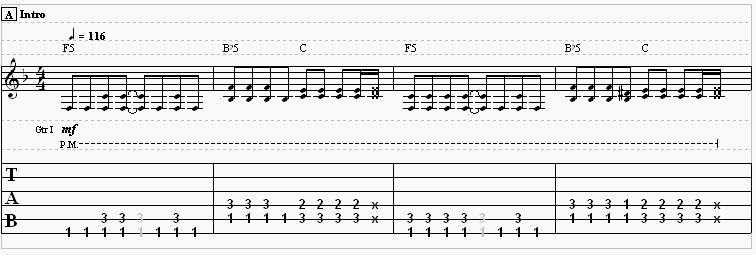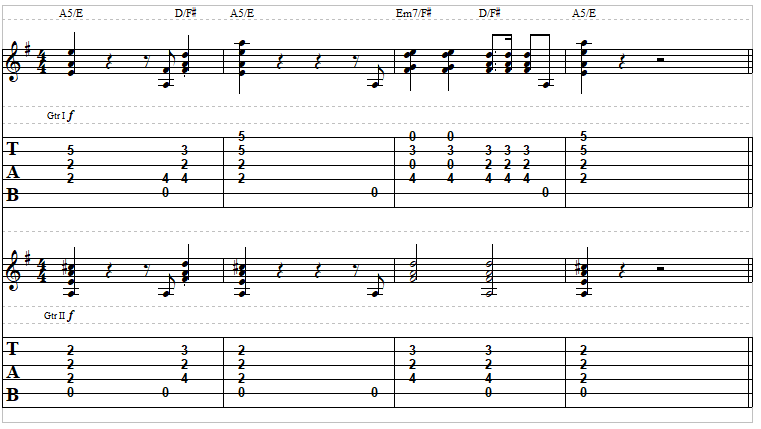There are three guitar parts during the chorus. Here’s how to play them all!

There are three guitar parts during the chorus. Here’s how to play them all!









No guitarist alive has really ever been able to equal the mass appeal that “Zep’s” Jimmy Page does. Robert Plant, the vocalist and frequent harmonica player, pierces your ears just as much as the solos and riffs that Jimmy plays. The band’s music is a fushion of seering rock and hard-as-nails riffs, and their music will continue to impress all of us musicians and music lovers for ages.

This song is fairly difficult to play right, but both measures are identical. Once you have the first measure, you just need to simply play it twice. To begin, there are a few terms that are necessary to understand the intricacy of how Jimmy Page played the guitar. Here is a quick glossary that will help you in this song:
P.M. – Palm mute – this is performed by muting the notes with your pick hand by lightly touching the string(s) near the bridge.
Short glissando (a type of slide) – this is played by picking
the note to its full value and then sliding in the specified direction ( or / ) at the last possible moment.
Legato slide ( another type of slide )- performed by playing the desired note and sliding to the following note. Only the first note is attacked in this type of slide.
1/4 bend – quarter note bend – a quarter note bend is performed by playing the note and bending the string equal to half of a fret.

To start off this song, use your 1st finger and place it on the “A” string on the seventh fret. While keeping that finger there, place your 3rd finger on the ninth fret on the “D” string. Play it once. That is a basic power chord. That is about all that is basic in this song. Next, you will need to play the “low E” open three times, and palm mute all other strings not being played. Now perform the power chord we just saw again. Play it once. Play the open “low E” again three times (palm muting again as well), and then go back to the power chord on the seventh and ninth fret:

Once you have done that, you will be performing a “short glissando.” (see above) Slide with your fingers still in the same position as shown above, and then you will go directly into a “legato slide.” The legato slide is from the fifth fret on the “low E” string. Use your 3rd finger
on the “low E.” Play, or “attack” that note and slide directly up to the seventh fret on the “low E” string. There is a quarter note bend coming up. Look again at the glossary above and that will help you
understand how to do it. You begin the end of this measure by placing your 1st finger on the fifth fret on the “A” string and bend that note
equal to half of a fret. (Remember to hit the “D” string open in
this process. You will probably do that by default) You are almost done! The last two notes to be played are simple. Use your 2nd finger to hit the seventh fret on the “low E” and then go back to the quarter note bend. That is it! You just learned the song.

The second measure is identical, except right before you go into the “glissando,” hit the power chord once more on the seventh and ninth fret. Good luck!